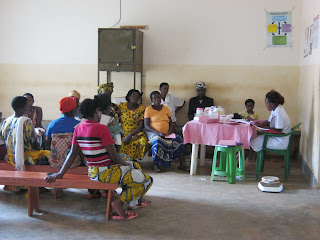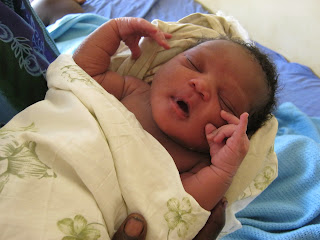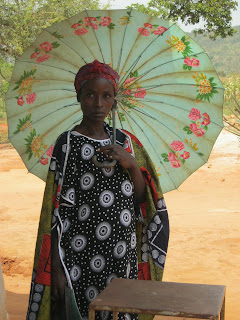Sadly my stay here is quickly coming to an end. I will miss the refugees, the staff, the clinic, my early misty morning run and my evening walk where the children often greet me and sometimes I try to test their knowledge of geography since they often ask me where I am from. While most may know where US is but Malaysia is another matter.
But I am also an animal lover so I have to say a few words about the creatures that I see here.
The sharp bleating cries of the ibises that wake me up in the morning are part of the scene here in Mbarara but not in Nakivale. Similarly the marabou storks seem to congregate more in the urban areas than the settlement. They are ugly gigantic birds that have long skinny legs and big wing span. Despite their size they land ever so gracefully and effortlessly on the top most branches of tall trees hardly swaying or disturbing them. They have this tendency to perch on the highest points of buildings and trees and sometimes they look like steeples on churches. I feel sorry for them as they scavenge for leftovers in the dumpsters looking kind of forlorn and unloved. Earlier in my stay in Mbarara, I saw a pair of grey crowned cranes on top of the same pine trees that the marabou storks nest but I have not seen them since. Next to the marabou storks these cranes are the epitome of elegance and grace. Such is the unfairness of nature.


On our long journey to Nakivale, from a distance I have spotted more grey crowned cranes in a field and several purple swamp hens.
As it is the season of the matoki (banana), men with heavy loads of sometimes seven bunches of them on their bicycle push their burden for many kilometers of dusty road often times uphill towards the market in Mbarara. A journey that takes us on our 4x4 a little over an hour but will probably take several hours for them.

The most impressive animals of all are the ankole: the long-horned cows. The refugees are too poor to own them but we often encounter several herds of them owned by the Ugandans. Some of the horns are huge and so perfectly symmetrical but they do look rather heavy. They make me wonder what are the evolutionary advantages of these astonishingly and ravishingly beautiful horns.


This week I think I saw my first patient with tetanus (lockjaw). He was hit on the head with a stick a week or so ago and was stitched up and apparently had also recently received tetanus shot. He came in with the inability to open his jaw, sweating, stiff neck, extreme pain in his muscles and bloody diarrhea. Having not eaten for a few days, his blood pressure was not palpable. He showed signs of trismus (inability to open his jaw), risus sardonicus (grimace)and opisthotonus (arching of the back). We gave him fluids and a whole bunch of antibiotics and transferred him to GIZ, a higher level center there they will have tetanus immune globulin and other supports to help him. Joy said a long and fervent prayer before he was transferred. Joshua said tetanus is not very common here but it is more often seen in neonates when the village mid-wives sometimes use cow-dungs for the wounds.



My last day at Nakivale, Joshua and I saw some very interesting patients but these are usually patients with serious conditions. A 40-year-old woman came in complaining of having shortness of breath, palpitations and chest pressure on and off for four months. Our exam showed that she had some heart failure and very likely due to some damaged valve problem likely from a previous bout of rheumatic fever. I started her on some diuretics and Ace-inhibitor and advised her that she should see a cardiologist. There is nothing much else we could do here.
Then an old man walked in with a handkerchief holding a enormous growth dripping with some pus. He had had the growth for four years and had been treated a few times, the last time was probably two years ago. We could not get from him what he was treated with. Joshua sent fluid for TB smear but there was none. The lab could not do any other kinds of culture. I ventured to tell Joshua that this might be actinomycosis (lumpy jaw), a chronic bacterial infection usually in the face and neck with sinus tracts which this patient had. This patient would need long-term antibiotic treatment and perhaps surgery as well given the enormous lump and the number of sinuses present. Joshua had never heard of this condition before so we discussed it for awhile.
Another man crawled into our consultation room with his wife in attendance. The room immediately filled up with a putrid smell. He claimed that his left leg became black just two days ago. The foot was black and from the bottom there was copious muddy drainage. the right leg was only slightly better, quite swollen and he had no painful sensation in either of the legs. We sent him to check blood sugar to look for diabetes but the lab ran out of test strips. We offered him our only pair of crutches. He would need an amputation as soon as possible We shipped these two patients to GIZ for further treatment. I wish them the best of luck.


As I watch the sun sets over Mbarara the refugees will be here even as I leave. UNHCR has been here in south west Uganda since 1954 taking care of these displaced people. The problem has not stopped yet. Worldwide there continues to be conflicts and droughts and as long as there are conflicts and disasters there will be refugees. Drought across the Horn of Africa, now affecting more than 11 million people in Ethiopia, Djibouti, Kenya and Somalia has resulted in waves of refugees to Ethiopia and north Kenya, many will likely die of starvation if humanitarian aid does not reach them in time.

This morning we saw Red Cross trucks coming to the settlement to deliver food to the refugees. A few weeks ago it was World Food Program that came here. We saw fewer patients today because many stayed to receive their food ration. On my way out I happened on a mother and child sitting outside. The baby was severely malnourished and I was sure she was HIV positive. Indeed mother and child went to get tested and both were positive for HIV.

To the staff of Kibengo HC II, a big asante sana (thank you) for welcoming us here.
To the refugees, Maniriho (God is with you).








































